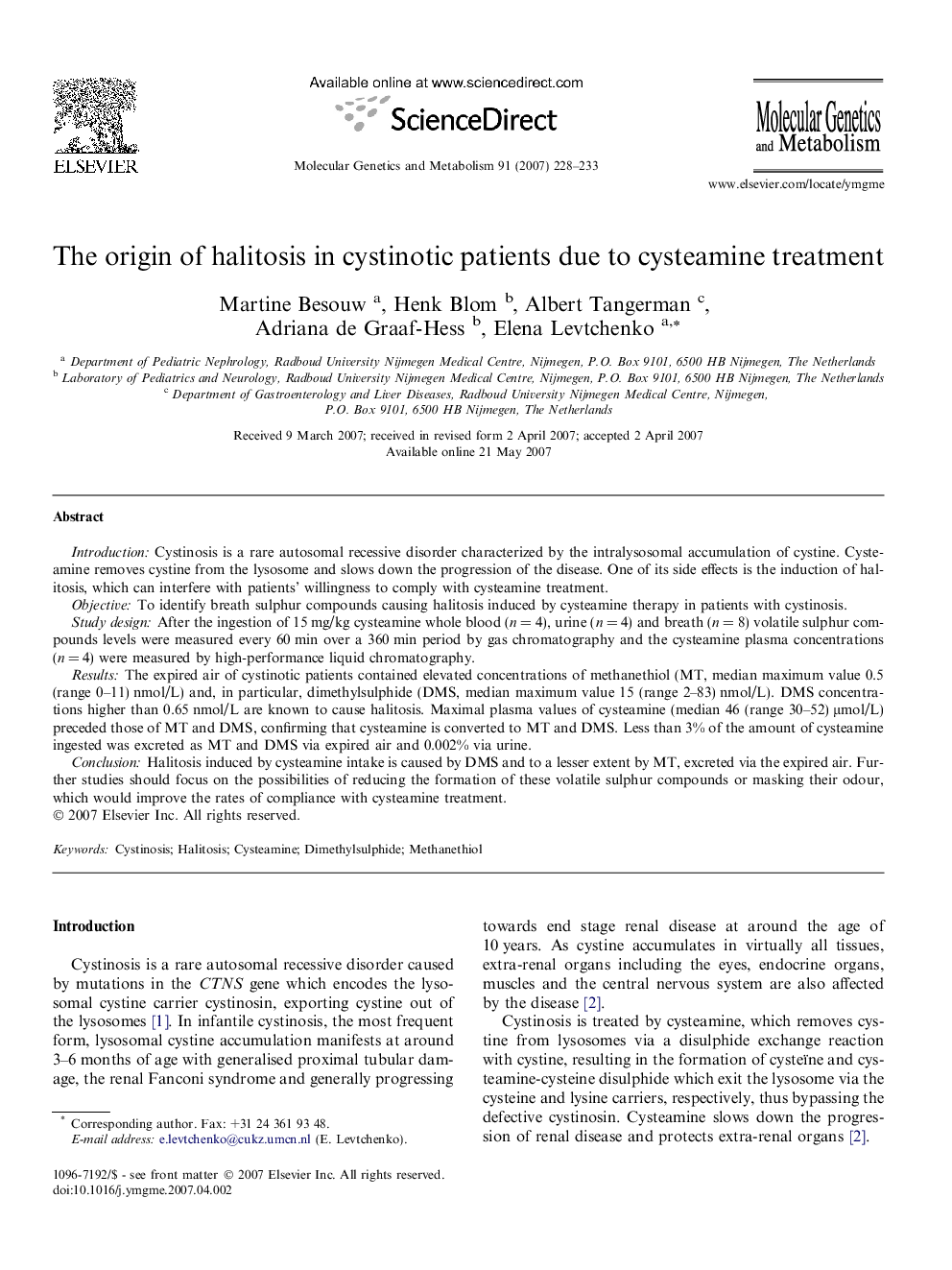| Article ID | Journal | Published Year | Pages | File Type |
|---|---|---|---|---|
| 1998906 | Molecular Genetics and Metabolism | 2007 | 6 Pages |
IntroductionCystinosis is a rare autosomal recessive disorder characterized by the intralysosomal accumulation of cystine. Cysteamine removes cystine from the lysosome and slows down the progression of the disease. One of its side effects is the induction of halitosis, which can interfere with patients’ willingness to comply with cysteamine treatment.ObjectiveTo identify breath sulphur compounds causing halitosis induced by cysteamine therapy in patients with cystinosis.Study designAfter the ingestion of 15 mg/kg cysteamine whole blood (n = 4), urine (n = 4) and breath (n = 8) volatile sulphur compounds levels were measured every 60 min over a 360 min period by gas chromatography and the cysteamine plasma concentrations (n = 4) were measured by high-performance liquid chromatography.ResultsThe expired air of cystinotic patients contained elevated concentrations of methanethiol (MT, median maximum value 0.5 (range 0–11) nmol/L) and, in particular, dimethylsulphide (DMS, median maximum value 15 (range 2–83) nmol/L). DMS concentrations higher than 0.65 nmol/L are known to cause halitosis. Maximal plasma values of cysteamine (median 46 (range 30–52) μmol/L) preceded those of MT and DMS, confirming that cysteamine is converted to MT and DMS. Less than 3% of the amount of cysteamine ingested was excreted as MT and DMS via expired air and 0.002% via urine.ConclusionHalitosis induced by cysteamine intake is caused by DMS and to a lesser extent by MT, excreted via the expired air. Further studies should focus on the possibilities of reducing the formation of these volatile sulphur compounds or masking their odour, which would improve the rates of compliance with cysteamine treatment.
